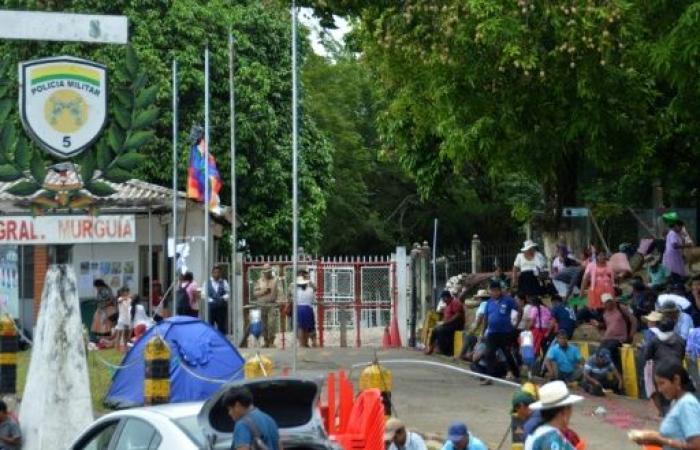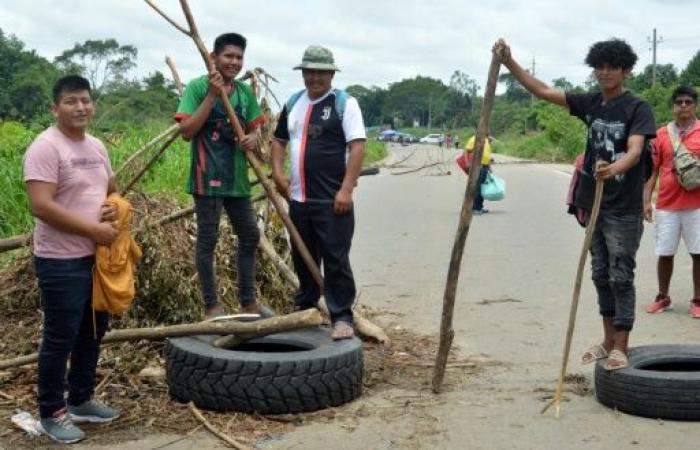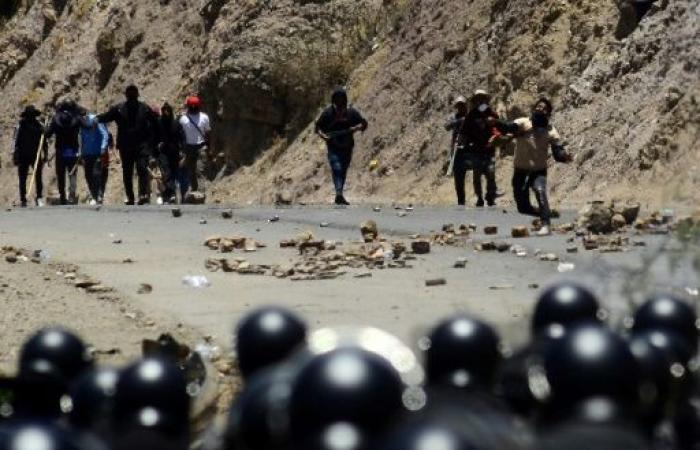The Bolivian government denounces the taking “hostage” of 200 soldiers by supporters of former president Evo Morales who are protesting against the “judicial persecution” of their leader and demanding the resignation of President Luis Arce.
Here is what we know about this “hostage-taking” which occurred as part of the roadblocks initiated on October 14 by supporters of the ex-president (2006-2019), who is competing with his ex-minister Arce for candidacy of the left in the 2025 presidential election.
What do we know about “hostage taking”?
The army announced on Friday the takeover by “irregular armed groups” of a unit in the department of Cochabamba (center), “taking soldiers hostage” and seizing “arms and ammunition”, without providing further details. details.
In one of the first videos to circulate on social networks, we see 16 soldiers surrounded by peasants armed with pointy sticks. “They cut off our water and electricity, they took us hostage,” said a soldier.
| © AFP Supporters of former Bolivian President Evo Morales in front of the barracks of the Ninth Division and Infantry Regiment 32, Idelfonso Murguía, in the village of Lauca Ñ, in the department of Cochabamba, Bolivia, on November 3, 2024. |
The next day, the Ministry of Foreign Affairs announced that “more than two hundred soldiers” were taken hostage “in three military units”.
The deputy minister for coordination with social movements, Juan Villca, told AFP on Monday that the three barracks were “still occupied”, without providing further details on the fate of the soldiers.
Hostages or not hostages?
“There is not a single hostage, I think the government is exaggerating and lying,” Vicente Choque, leader of the indigenous federations of Chapare, in the department of Cochabamba, assures AFP.
The official only mentions the presence of a “vigil” in front of the barracks, reporting 2,000 to 3,000 people “at the gates of the ninth division of the army”, one of the units concerned.
If the soldiers wish to leave the regiment, he says, “we coordinate” with the people at the gates and “they can leave peacefully”.
But Omar Duran, a retired officer, told AFP that the soldiers are indeed “restrained, they are not authorized to leave”.
| © AFP Supporters of former Bolivian President Evo Morales in front of the barracks of the Ninth Division and Infantry Regiment 32, Idelfonso Murguía, in the village of Lauca Ñ, in the department of Cochabamba, Bolivia, November 3, 2024. |
In an AFP video, we see many people, including children, in front of the barracks, some sitting under tarpaulins. In the unit, soldiers appear to be standing guard, while others sit on a bench. None appear armed.
How could this have happened?
Mr. Duran expresses doubts about the effectiveness of intelligence within the three units, pointing to a lack of resources. “The armed forces are abandoned, they do not have anti-riot equipment and the few weapons they have are weapons of war,” he assures.
 | © AFP/Archives Supporters of former Bolivian President Evo Morales stone the police in Parotani, in the department of Cochabamba, on November 1, 2024 |
He further suggests that the military might have been reluctant to intervene for fear of not being supported by the government. “The officers fear that at the first shot, the government will abandon them,” he says.
“There will certainly be a thorough investigation (…) into the soldiers who authorized (the peasants) to enter,” assured Deputy Minister Villca.
The three regiments are located in the Chapare region, the political stronghold of Evo Morales, the first indigenous person to lead Bolivia.








